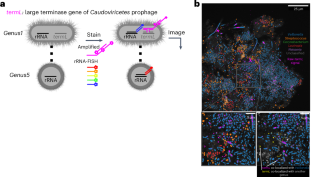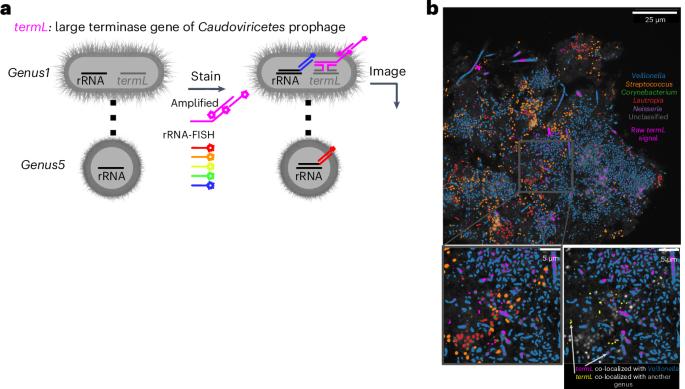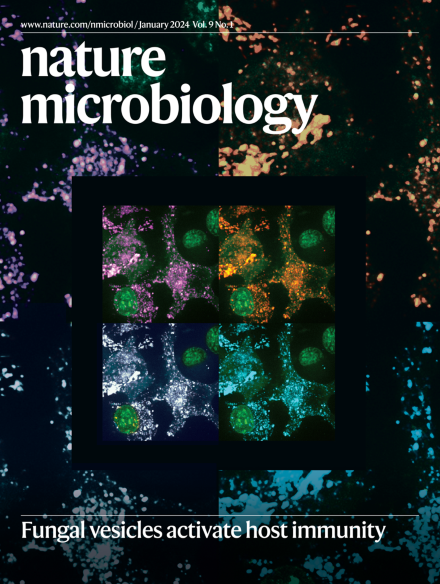显微镜方法绘制移动遗传元素及其细菌宿主图谱
IF 20.5
1区 生物学
Q1 MICROBIOLOGY
引用次数: 0
摘要
移动遗传因子荧光原位杂交(MGE-FISH)可绘制微生物群目标基因的空间图谱。我们将 MGE-FISH 与高系统发育分辨率荧光原位杂交(HiPR-FISH)相结合,同时绘制细菌类群和移动遗传因子(如质粒和噬菌体)的图谱,从而确定其宿主类群并揭示移动遗传因子的空间分布。本文章由计算机程序翻译,如有差异,请以英文原文为准。


Microscopy methods map mobile genetic elements and their bacterial hosts
Mobile genetic element fluorescence in situ hybridization (MGE-FISH) creates spatial maps of target genes in microbiomes. We combine MGE-FISH with high phylogenetic resolution FISH (HiPR-FISH) to simultaneously map bacterial taxa and mobile genetic elements such as plasmids and phage, identifying their host taxa and revealing mobile genetic element spatial distribution.
求助全文
通过发布文献求助,成功后即可免费获取论文全文。
去求助
来源期刊

Nature Microbiology
Immunology and Microbiology-Microbiology
CiteScore
44.40
自引率
1.10%
发文量
226
期刊介绍:
Nature Microbiology aims to cover a comprehensive range of topics related to microorganisms. This includes:
Evolution: The journal is interested in exploring the evolutionary aspects of microorganisms. This may include research on their genetic diversity, adaptation, and speciation over time.
Physiology and cell biology: Nature Microbiology seeks to understand the functions and characteristics of microorganisms at the cellular and physiological levels. This may involve studying their metabolism, growth patterns, and cellular processes.
Interactions: The journal focuses on the interactions microorganisms have with each other, as well as their interactions with hosts or the environment. This encompasses investigations into microbial communities, symbiotic relationships, and microbial responses to different environments.
Societal significance: Nature Microbiology recognizes the societal impact of microorganisms and welcomes studies that explore their practical applications. This may include research on microbial diseases, biotechnology, or environmental remediation.
In summary, Nature Microbiology is interested in research related to the evolution, physiology and cell biology of microorganisms, their interactions, and their societal relevance.
 求助内容:
求助内容: 应助结果提醒方式:
应助结果提醒方式:


